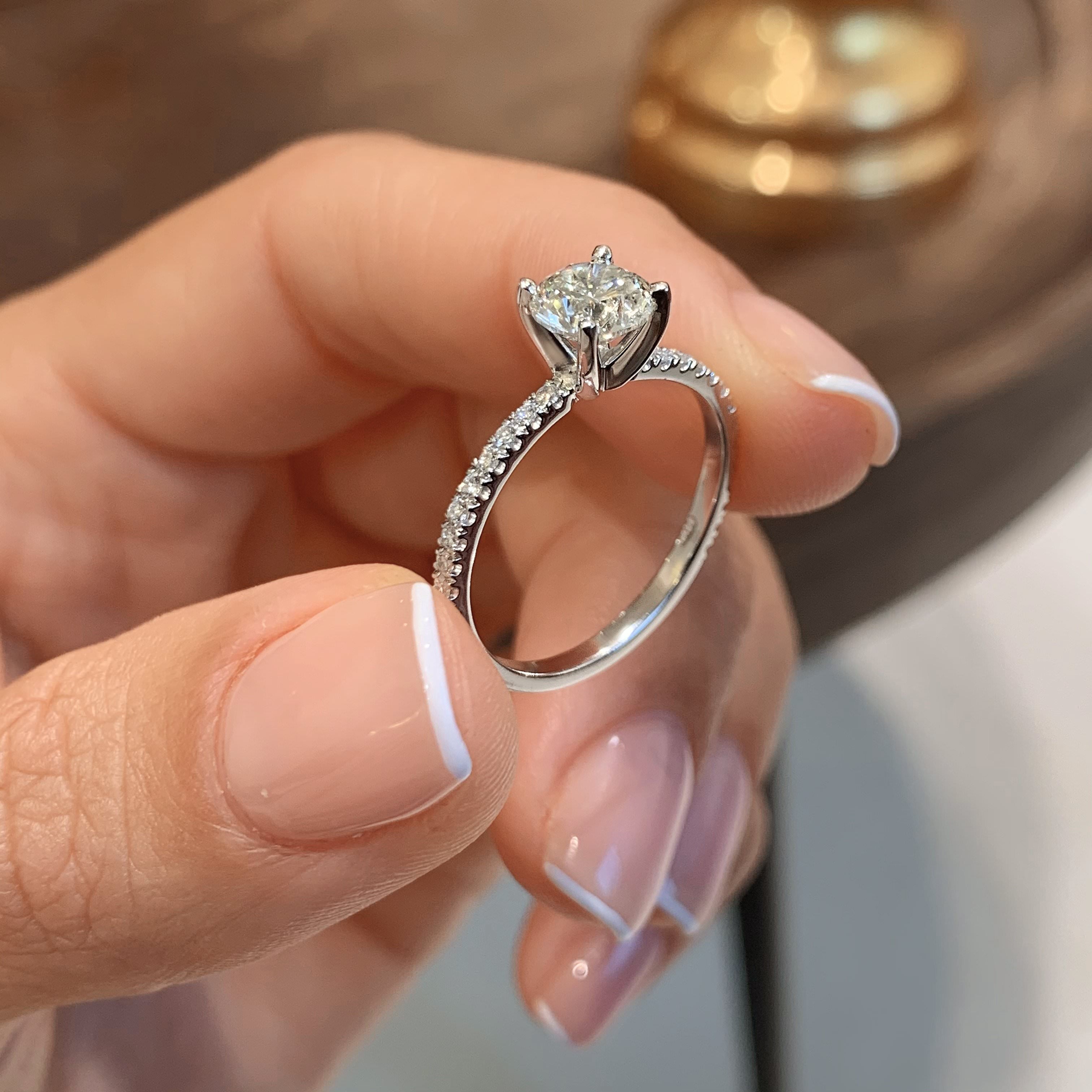The world of lab diamond rings presents a fascinating array of choices, with platinum and gold being two of the most sought-after metals. When selecting the perfect setting for a lab diamond, understanding the differences between these two metals is essential. This comprehensive guide will delve into the characteristics, advantages, and considerations of both platinum and gold, helping you make an informed decision for your next purchase.
Understanding Lab Diamonds
Lab-grown diamonds are created using advanced technological processes that replicate the natural diamond formation, resulting in stones that are chemically, physically, and optically identical to mined diamonds. These diamonds are increasingly popular due to their ethical sourcing, environmental sustainability, and cost-effectiveness.
Platinum: The Epitome of Elegance
Platinum is renowned for its rarity, durability, and hypoallergenic properties. It is a naturally white metal that maintains its luster without the need for regular re-plating.
Durability and Strength
Platinum is one of the strongest and most durable precious metals available, making it an excellent choice for a ring that will be worn daily. Its density ensures that it can securely hold the diamond, providing peace of mind that the stone will remain in place.
Hypoallergenic Nature
For those with sensitive skin or allergies to certain metals, platinum’s hypoallergenic properties are a significant advantage. Unlike other metals, lab diamond rings platinum vs gold, platinum rarely causes allergic reactions, making it a safe and comfortable option for everyone.
Long-lasting Shine
Platinum’s natural white sheen does not fade or tarnish over time. Unlike white gold, which requires periodic re-plating with rhodium to maintain its color, platinum retains its brilliant shine with minimal maintenance.
Gold: A Timeless Classic
Gold has been used in jewelry for centuries and remains a popular choice for engagement and wedding rings. Available in various colors and karats, gold offers versatility and beauty.
Variety of Colors
Gold’s ability to be alloyed with other metals allows for a wide range of colors, including yellow gold, white gold, and rose gold. Each color offers a unique aesthetic, catering to different personal preferences and styles.
- Yellow Gold: The classic choice, yellow gold exudes warmth and tradition. It pairs beautifully with vintage and classic styles.
- White Gold: This modern option is achieved by alloying gold with white metals like palladium or nickel and is often plated with rhodium to enhance its white appearance.
- Rose Gold: A romantic and trendy choice, rose gold is created by alloying gold with copper, resulting in a pinkish hue that complements various skin tones.
Different Karats
Gold’s purity is measured in karats, with 24K being pure gold. However, pure gold is too soft for everyday wear, so it is often alloyed to increase its strength. Common karats used in jewelry include:
- 18K Gold: Comprising 75% gold, 18K gold strikes a balance between purity and durability. It is ideal for fine jewelry that requires a higher gold content.
- 14K Gold: Containing 58.3% gold, 14K gold is more durable and affordable, making it a practical choice for everyday wear.
- 10K Gold: With 41.7% gold, 10K gold is the most durable and least expensive option, although it contains a higher percentage of alloy metals.
Comparison: Platinum vs. Gold
When deciding between platinum and gold for a lab created diamonds ring, several factors should be considered:
Durability and Maintenance
- Platinum: Known for its strength and resistance to wear, platinum is an excellent choice for rings that will endure daily use. Its natural white color does not require re-plating, reducing long-term maintenance.
- Gold: While gold is also durable, it is softer than platinum and can scratch more easily. White gold, in particular, requires periodic re-plating to maintain its color.
Cost and Value
- Platinum: Generally more expensive than gold due to its rarity and density, platinum is a premium choice that offers lasting value and prestige.
- Gold: More affordable and available in various price points depending on the karat, gold provides flexibility for different budgets while still offering elegance and beauty.
Allergies and Skin Sensitivity
- Platinum: Ideal for individuals with metal allergies, platinum is hypoallergenic and unlikely to cause skin reactions.
- Gold: Depending on the alloys used, some gold jewelry, particularly white gold, can cause allergic reactions in sensitive individuals. It is essential to consider the metal composition if allergies are a concern.
Aesthetic Preferences
- Platinum: Its understated elegance and enduring white sheen make platinum a timeless choice that complements the brilliance of lab diamonds.
- Gold: With a wide range of colors and styles, gold offers versatility and the ability to match various personal tastes and trends.
Making the Right Choice
Ultimately, the decision between platinum and gold for a lab diamond ring depends on personal preferences, lifestyle, and budget. Here are some questions to consider when making your choice:
- How often will the ring be worn? If it is for daily wear, platinum’s durability may be preferable.
- Do you have any metal allergies? Platinum’s hypoallergenic properties make it a safer option for sensitive skin.
- What is your budget? Gold offers more price flexibility, allowing you to choose between different karats and alloys.
- Which color do you prefer? Gold’s variety of colors can cater to specific aesthetic preferences, while platinum offers a consistent and timeless white shine.
Conclusion
Choosing between platinum and gold for your lab diamond ring is a significant decision that affects the ring’s durability, appearance, and overall value. Both metals have their unique advantages and charm, making them excellent choices for different reasons. By understanding the properties and benefits of each, you can select the metal that best aligns with your personal style, lifestyle, and budget, ensuring that your lab diamond ring remains a cherished piece for years to come.

